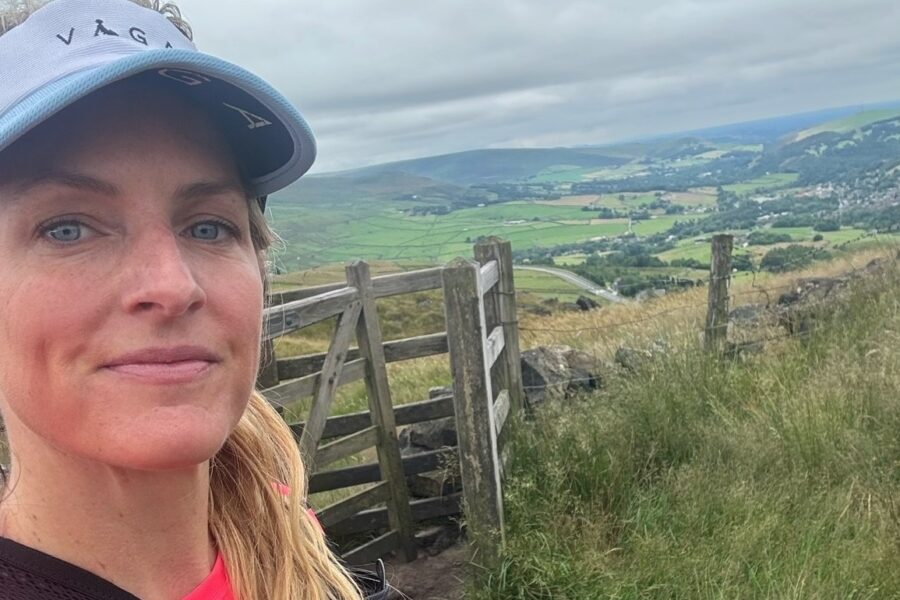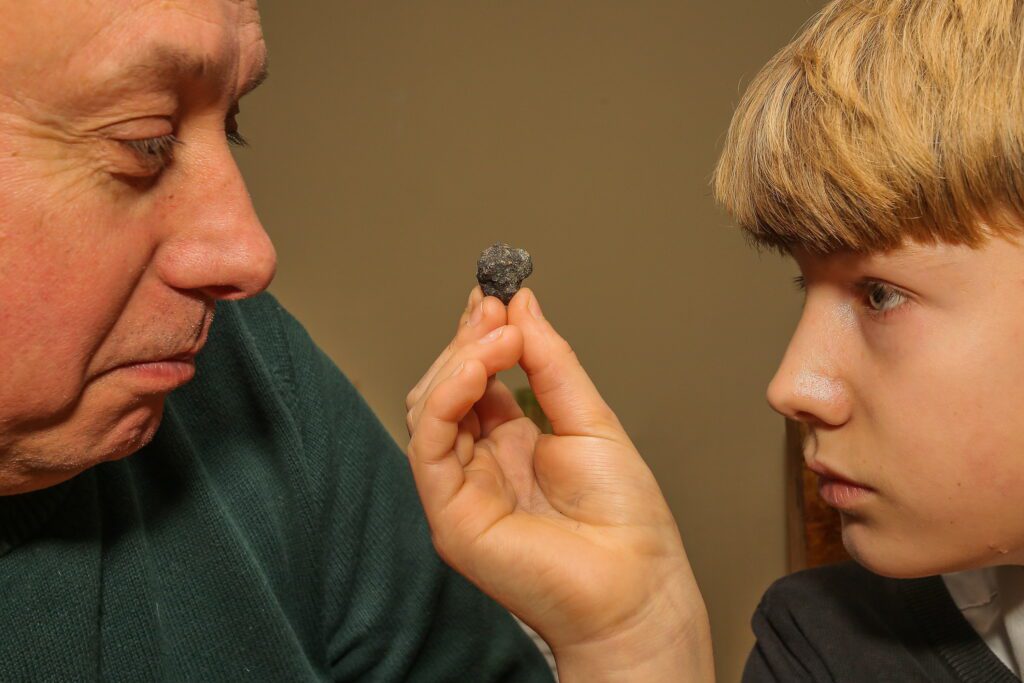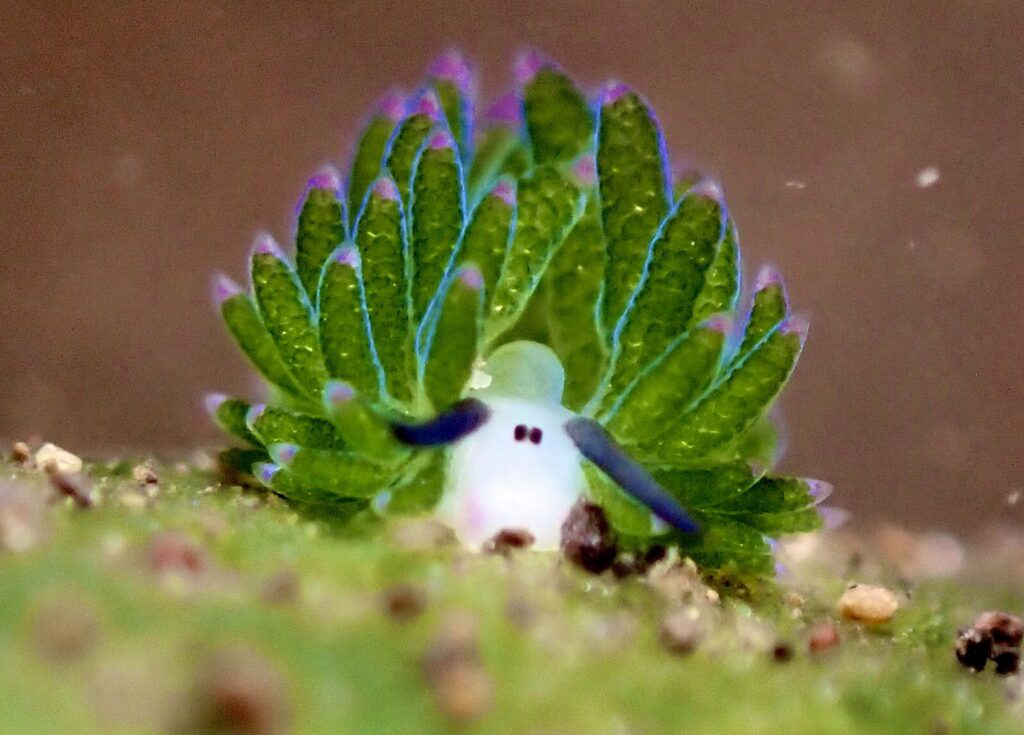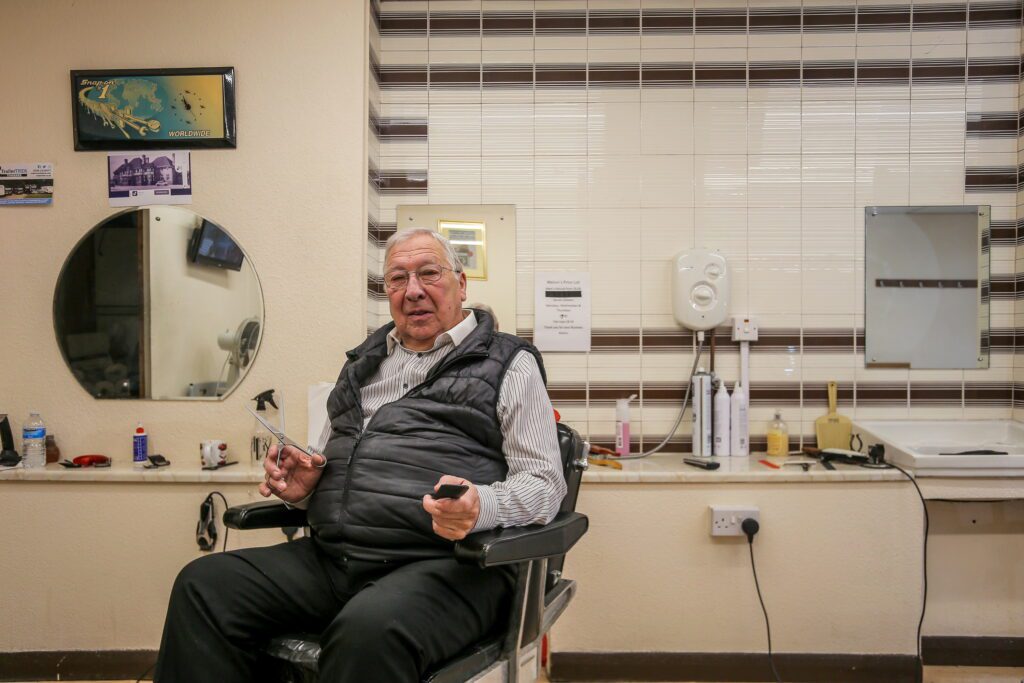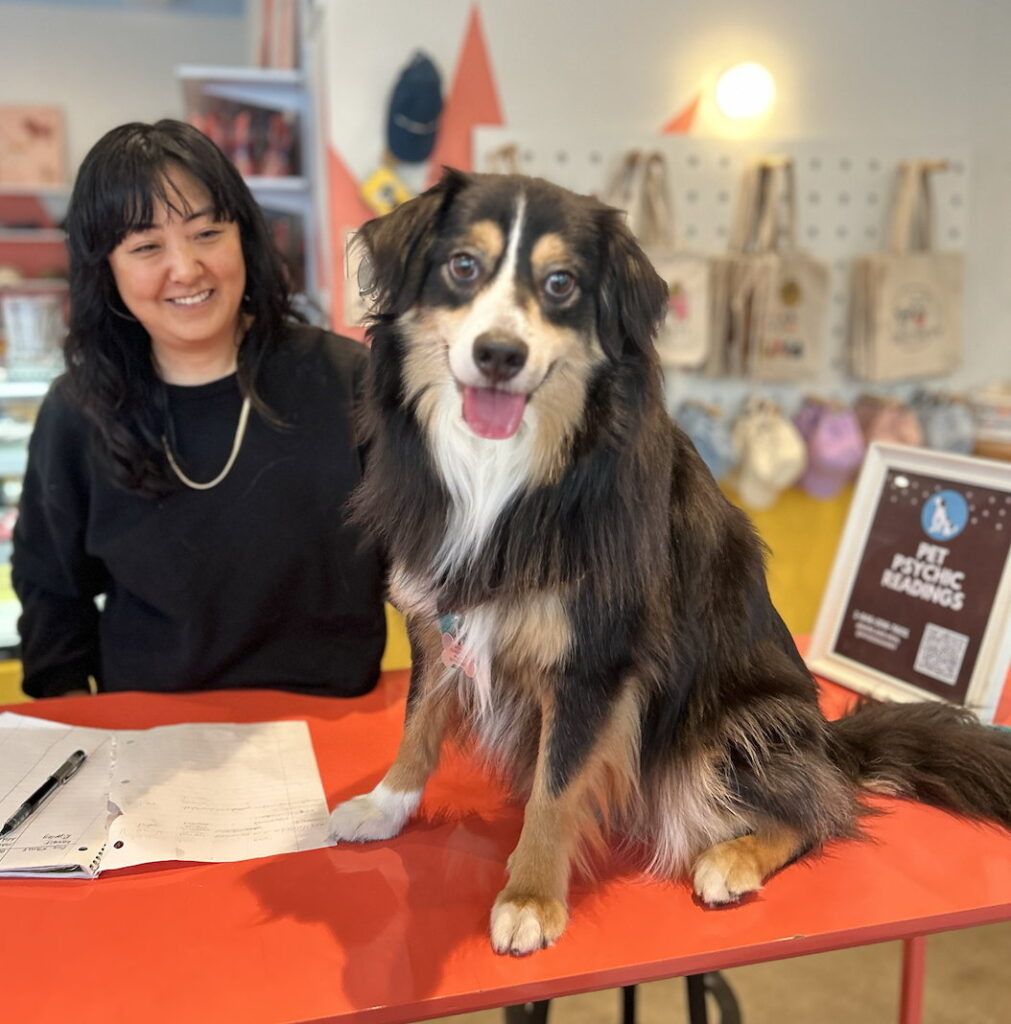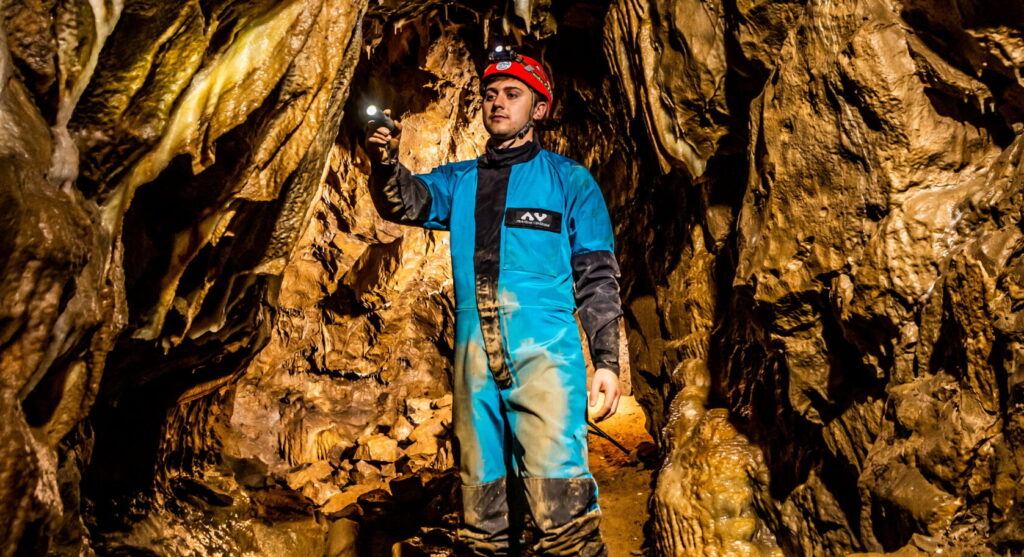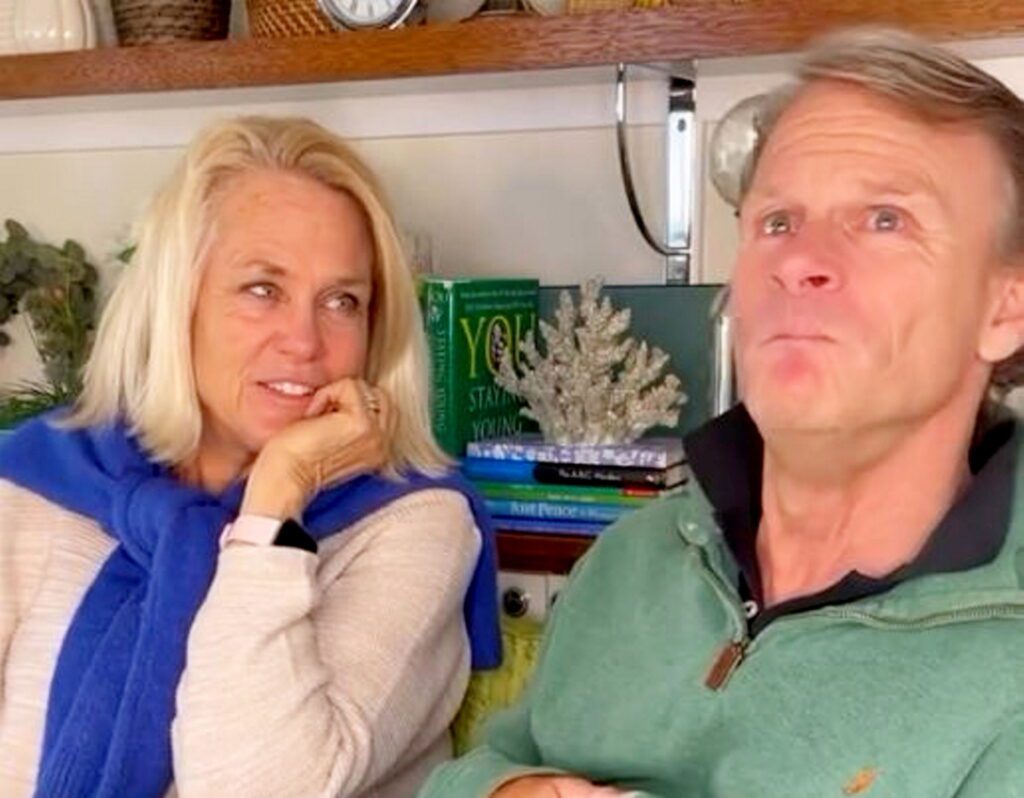Woman unable to walk in straight line because of brain condition is running ultramarathon
A woman who was left unable to walk in a straight line because of a rare brain condition is now running an ultramarathon.
Mel Sykes, 42, was diagnosed with a Chiari malformation – where the lower part of the brain pushes down into the spinal canal – after losing her balance and slurring her speech.
Mel, who has previously took part in 100 mile races, had surgery to reduce the pressure on her brain but was told there was a chance that she could never run again.
However, she’s now taking part in the Spine Race – where participants have seven days to run 268 miles from Edale, Derbys., to Kirk Yetholm, Scotland.


Mel said: “I was able to stop wearing my glasses about three months ago as my vision is back to normal.
“Sometimes I’m a bit wobbly on my feet still but I’m doing great.
“I never thought I’d be up and about again – let alone doing crazy things like this.”
Mel first started suffering with double vision in 2023, but went to the opticians and the GP who both “didn’t seem too concerned” about it and prescribed her some glasses.
She then struggled to drive because of her double vision and then started suffering from having pins and needles in the left side of her face, arm and hand.
Mel was then unable to walk in a straight line because she was losing her balance and then she started to slur her speech.
She said: “I began with double vision in the summer which my optician and GP didn’t seem too concerned about at the time.
“I was prescribed some glasses, but these didn’t really help and I was starting to struggle with my work as a specialist podiatrist.
“Everyone kept asking me if I felt tired.
“At this point I had a full-time job and was running 100-mile races – I didn’t know what was normal tired or poorly tired.
“My colleagues were so supportive throughout all of the investigations but it became too difficult to manage my work with the double vision.
“I had to stop driving, so then I had to go off work.
“As soon as I did, all of the other symptoms came on pretty quickly.
“I was losing my balance, my left hand, arm and the left side of my face had pins and needles constantly, and I had a strange tremor in my head.
“In just a week, I couldn’t even walk in a straight line and was starting to slur my speech.”

Mel, of Holmfirth, West Yorks., was initially treated at Calderdale and Huddersfield NHS Trust but was then referred to the specialist neurosurgery team at Leeds General Infirmary.
But after having surgery, she asked doctors Ian Anderson and Emeka Okorie if she could ever do an ultramarathon again – but they said she might not even be able to run now.
Mel, a specialist podiatrist, said: “I asked them if I’d ever be able to run an ultramarathon again.
“They told me that they couldn’t guarantee I’d be able to run at all, let alone to the extremes I’d been doing.
“I had to accept it and concentrate on my recovery.”
After Mel’s surgery, she started walking small distances with a friend but just four months after the operation, she took part in an 18 mile race.

She said: “I was up on my feet quite quickly but walking small distances at first, to the end of the street and back was all I could manage as long as a friend was with me.
“By the end of December I was able to start some slow running again.
“Then in February, I ran an 18-mile race – just four months after brain surgery.”
Mr Anderson said: “Melanie is an inspirational patient.
“We see patients with Chiari malformation not infrequently but hers was one of the most substantial that I have come across and her symptoms were so severe that I knew that she needed her surgery urgently.
“It’s humbling to see how courageous and determined our patients can be.
“I feel sure that her fantastic recovery is due, in no small amount, to her positive attitude.”
The Spine Race left Edale yesterday (Sunday) and competitors have a week to reach the finish line in Scotland.
Shocked family find their car windscreen smashed – by a meteorite
A shocked family found their car windscreen had been smashed – by a METEORITE.
Paul Butler, 55, and his family were watching TV at home when they heard a loud bang outside.
They dismissed the noise as fireworks being set off on Boxing Day night and went to bed.


The next morning, Paul went outside his home in Stratford-upon-Avon, Warks., and noticed his parents’ car windscreen was shattered.
His son Nathan, 12, discovered a small black shiny rock measuring around 2cm in length near the car which didn’t match with any other stones.
The eagle-eyed schoolboy put a magnet next to the rock which revealed it was magnetised which is a tell-tale sign the stone came from outer space.
Online research revealed it was most likely to be a piece of meteorite which plummeted to earth.
Nathan said: “I was looking around on the ground near the car and right by the front wheel was a black rock that stood out from all the others.
“I wondered if it could possibly be a meteorite but wasn’t sure until we used a magnet and researched it online.”

Paul, who runs a firm providing forensic science equipment, added: “We all heard a loud bang in the night but didn’t think anything of it.
“We assumed it was probably someone letting off a firework.
“It was only when we came down for breakfast the next morning that I saw my parents’ car windscreen was smashed.
“I went outside with Nathan and he was looking around and found this strange black rock.
“It had a strange shape and looked like it had been burned.
“After Nathan tested it with a magnet we looked online and it looks like it was meteorite.
“It is the only logical explanation for what caused the damage because it wasn’t there when my dad drove into the driveway.
“It must have happened on the driveway. The glass was inside the car and was covering the dashboard and driver’s seat.
“The impact looks like it splintered the glass and made a fair bit of damage but it’s very lucky no one was inside at the time.”

Paul’s parents Graham and June were forced to drive their Toyota to a nearby garage where they had to explain the billion-to-one cause of the damage.
Paul added: “We found out it was about a billion-to-one chance of a meteorite hitting the car in our driveway so we’ve started buying lottery tickets.”
Nathan plans to take the space rock into Myton School in Warwick where he attends, to show off to his classmates.
Diver fulfills dream by snapping CUTEST sea creature ever
Is this the cutest sea creature ever?
Keen diver Yusuke Fukami fulfilled a personal dream by snapping a cartoon-like Costasiella sea slug while in Bali.
He says: “One of the diving points was in Tulamben, a small fishing village on the north-east coast.
“Meeting this creature was the biggest purpose why we visited Tulamben, so when we finally found one I was really delighted to have achieved my purpose.”


Yusuke, from Kanagawa in Japan, went on his trip in December with the local Noble Bali Tulamben diving resort.
He adds: “It was so cute that I was like “Ahhhhhhhh it’s cuuuuuuute” when I was taking photo of it in the sea.”
Discovered in 1993 off the coast of the Japanese island Kuroshima, Costasiella kuroshimae are also found in waters near the Philippines.
UK’s longest serving barber still cutting hair after 65 years
Britain’s longest serving barber says he has no plans to hang up his scissors yet – after nearly 65 YEARS of cutting hair.
Melvin Eley, 76, is at the barber shop he joined in 1961 and still charges old-fashioned prices more than six decades later.
He started working at the shop on Richmond Road in Stetchford, Birmingham, as a Saturday boy aged 13 and has remained there ever since.
The great-grandad-of-six works 20 hours a week and says he’ll keep going for as long as he physically can – despite pleas from his children to retire.

Melvin started as a teenager under the leadership of the shop’s previous owner Tony East before buying out the business in 1982.
He has gone on to trim hundreds of thousands of fringes at Melvin’s Gentleman’s Hairdresser, including those of footballers, politicians and musicians.
Melvin prides himself on keeping things traditional – as well as a timewarp interior he’s kept his prices at just £8 per trim and only offers haircuts, no beard work or shaves.
And the dad-of-four says he’s had no formal training and learnt all he knew from his old boss.
Melvin said: “I started part-time at 13. I went to another local hairdresser first and he told me that he had too many in the shop.
“I went to another barbers run by a chap named Tony as I knew him through my brothers and he asked me if I wanted a job.
“Tony owned it for 24 years and I’ve owned it for 43 years now. We’re the last shop standing on the road.
“It is the same shop it has always been. I put a bit of emulsion on it now and then.
“I just picked up hairdressing off Tony when he took me in. He’d only had the shop about 12 months when he took me on.
“I was cutting hair when I was about 14, customers would say ‘come on, have a go’, so I did.
“I had no interest in hair before he took me on. I was just happy that I had a job doing something I enjoyed when I left school.
“I’ve always been one of those chaps who was happy enough stopping where I was. I’ve never had another job, this is my only job.”
The ‘old school’ barber has become somewhat of a local legend and many of his clients have been regulars for the last 30 to 50 years.


His longest serving customer, John, has been visiting the shop from his home in Shirley, West Mids., for a staggering 66 years.
Melvin said: “All my customers are now regulars. There’s two chaps who have been coming for around 50 years.
“I’ve been cutting most of my customer hair between 30 and 50 years.
“I don’t do beards, I just keep it traditional. All I do is haircuts, I don’t do shaves. It’s just traditional, and that’s the way I like it. I’m happy, it gets me out of the house.
“I only charge £8 per customer. I’ve had to up the senior citizen price to £7.
“I do 9am to 1pm now, five days a week, Monday to Saturday with Tuesday off.
“I’ve had John, a customer, for 66 years. He was coming there before I had the shop. He still comes in from Shirley. which is a good half hour away.”

Some of Melvin’s famous customers include musician Ranking Roger, from The Beat, and a string of former Wolves players.
Melvin’s partner Eileen passed away in 2023 and he recently recovered from prostate cancer, but he says he has no plans to slow down.
Melvin added: “The thing is with what’s happened to me, I’m just waiting for my body to get well, I’ve had prostate cancer and a new hip.
“I’ll carry on until my body allows me to. I’ll be alright to carry on for a few more years I reckon.
“A couple of my family want me to pack up and slow down, but what am I going to do with myself?
“I still enjoy my job so I will keep going for as long as I can.”
Meet the real-life Dr Doolittle – pet psychic whose ‘spoken’ to 700 animals
Meet the real-life Dr Doolittle – a pet communicator who says she can talk to animals.
Cynthia Okimoto, 44, says she discovered her unusual skill when she suddenly realized she could hear the thoughts of her friend’s pet rat eight years ago.
She went on to practise and now she says she can tune into the thoughts of any animal – including cats and dogs.
Some 700 pet owners have enlisted her to help them understand their furry friends – and now she’s a full-time pet psychic and has helped deliver pet messages about everything from the food they like to if they are happy and whether or not they like their owner’s partner.

Cynthia charges between $35 to $75 for a session – telepathically facilitating a conversation between pet and owner.
And she says she can often find answers for owners that vets or trainers can’t.
Cynthia, a pet communicator and trainer, from New York City, said: “I feel that in a way it is beyond seeing a dog trainer, nutritionist or a vet.
“During the session, people feel really connected to their pets.
“People will also ask me to tell their pets that they love them.
“They will tell their pets that all the time, but through me they feel like the message is connecting.”
Cynthia was on a spiritual retreat in Russia where a High Priestess told her that she had the ability to speak to animals but she didn’t believe her.
It wasn’t until her friend’s rat, Max, started communicating with her about her business she believed she was able to.
When she realised that Max was communicating her with Cynthia said she was “curious” and found it “interesting”.
“I was at work, it was late, and he started to talk to me about what she should do for her business,” she said.
“I told her and she thought it was really cool, I told other friends who had pets and it evolved from that.”

Cynthia says she then realized she could do the same with poodles her mother was rescuing and fostering for a dog rescue – and used her skills to help them find homes.
“I would communicate with them and ask them where they want to live and what sort of lifestyle they would like,” she said.
From there, friends and family would ask her to do readings with their pets.
In 2023, Cynthia approached her local pet store and told them how she could communicate with animals.
She started hosting pet readings in store – and said they sold out immediately.
Cynthia mainly communicates with dogs but has also communicated with cats from time to time.

She said that most owners will ask her whether or not their pet is happy and ask her to tell the pet that the owners love them.
Cynthia said: “Almost every question people will ask me is whether or not their pet is happy.
“They want to know what they think about their food, or how the pet feels about their partner.
“I also get asked if there is a problem or if their dog barks they will ask what the trigger is.”
Cynthia said people are often excited when she tells them what she does for a living and says she’s never encountered criticism or scepticism “to my face”.
“A lot of people who do readings with me say they have been looking for a pet psychic for a while,” she said.
Teen, 17, becomes one of world’s youngest pilots before even graduated high school
A 17-year-old has become one of the world’s youngest pilots before he’s even graduated high school after earning his private flying license
Reese Tarman, a senior from Carlsbad, California, started navigating the skies after his uncle gave him a surprise gift in August 2023 – when he was just 16.
And after about 110 hours flying over only 16 months, he passed his flying test last November – and can now fly a rented Cessna 172R solo.

Reese, who is one of the youngest pilots in the world, flies about every three weeks – even taking his family and friends to lunch.
And now he dreams of becoming a commercial pilot with Southwest Airlines.
“People told me I’d be more interested if I stuck with it, so I kept pushing on. Around December, I decided that being a pilot was what I wanted to do for my career.”
The schoolboy added: “My uncle just kind of surprised me with a, like, ‘Let’s try something new.’ So I went on a discovery flight,” Reese recalled.
“I didn’t really have anything going on in my spare time, and it was intriguing. I started taking lessons, but I wasn’t totally into it for the first four months.
Reese’s uncle, Ted, 64, a retired custom home builder also from Carlsbad, recalled taking the young aviator and his twin brother, Luke, on familiarization flights two years ago.
“At first, they both thought it was cool, but then Reese took to it,” Ted shared, noting you have to be 17 in order to receive a license. “I got him a logbook, signed him up, and the rest is history. Now, he’s a full-fledged FAA pilot.”

From that point forward, Reese fully committed to his goal, earning his license in just 16 months — a milestone he calls “totally worth it.”
“It was something I decided I needed to dedicate myself to, to show myself that I could do it. I had a good support system, and that made all the difference,” he said.
Reese’s fascination with aviation actually began much earlier, thanks to his uncle’s influence.
“When they were about five, I took them on a B-17 airplane tour,” Ted explained. “I thought it was just a walkthrough, but it ended up being a flight.
“They strapped in with five-point harnesses, and we took off.
“Reese and Luke were so little, they could barely verbalize what was going on, but when they got off, they were just in awe.”

Reese recalled being around five when he stepped onto a B-17 airplane, a World War II bomber.
“I remember being so interested in it,” Reese shared.
“But I’d never been in a small plane until my discovery flight.
“Starting lessons was exciting — getting to try something new while also proving to myself that anything’s possible.”
Like most journeys, Reese’s path to becoming a pilot wasn’t without challenges.
“Learning to do power-on and power-off stalls was one of the hardest things,” Reese admitted. “It took me a few months to get over the fear.
“The plane pitches back until it stalls, and then it kind of free-falls to one side. It was really scary, but I couldn’t move forward in training without mastering that maneuver.
“I eventually got over it, and now I can do stalls, no problem.”
Landing a plane also proved tricky.
“I had a weird habit of porpoising the plane during landings,” he explained. “I’d land on all three wheels instead of the rear wheels first, and the plane would bounce.
“My first solo flight was a struggle because of it, but I worked through it. Now, it’s second nature.”
Reese flies a rented Cessna 172R and SP model but dreams of piloting larger and faster aircraft in the future.
“My dream plane is probably a Cessna Citation. Those are pretty cool — they can go fast,” he said.
“Ultimately, I’d love to fly for Southwest Airlines one day. It’ll take a lot of time, work, and money to get there, but if other people can do it, I figure I can too.”

His next steps include attending either Southern Utah University or Arizona State University, both of which have prestigious aviation programs.
“Through college, I plan to get all my ratings —instrument, commercial, multi-engine, and my CFI rating,” he explained.
“I’ll build hours as a Certified Flight Instructor and, hopefully, get picked up by an airline right after college.”
For Reese, flying is about more than just mastering the technical skills — it’s about connecting with others who share his passion.
“There’s another kid at my school doing the same thing with a different flight school, and I’m actually being interviewed for my school news program this weekend,” he said.
“It’s definitely cool to meet other young pilots. I know three or four people around my age, a little older, who are also into flying.
“We talk, share advice, and mentor each other — it’s a great support system.”

For Ted, Reese’s decision to pursue flying came as no surprise.
“Reese is a great kid. I hate to use the word ‘sweet’ because he’s 17 now, but he really doesn’t have a mean bone in his body,” Ted said.
“I told him it was going to be hard — navigation, aerodynamics, physics — but he kept his nose down, worked hard, and got through it. I couldn’t be more proud of him.”
As Reese prepares for the future, he reflects on what this journey has taught him.
“If you dedicate yourself and push through your fears, you can accomplish just about anything.”
“I had a heart attack at 22 – doctors thought I was having a panic attack.”
A woman is celebrating the anniversary of her heart attack at the age of 22 with a heart-shaped cake – after her symptoms were dismissed for a panic attack and a stomach bug.
Faith Harrison, now 23, started to feel unwell after playing a hockey match on January 6, 2024, and initially thought she had pulled a muscle.
When she got home she started vomiting, felt pins and needles in her left arm and had chest pains but after calling 999 she was told she was likely having a panic attack and didn’t require emergency care.
Faith mentioned she had previously had two blood clots – but says she was still dismissed.

When her symptoms persisted her family took her to A&E where they were initially told she had a stomach bug.
Doctors ran an ECG “just to make sure” and discovered Faith was having a “widowmaker” heart attack – when the biggest artery to the organ is blocked.
After an emergency surgery Faith was told her heart was functioning at just 27 per cent and was later told she might need a heart transplant.
But a determined Faith has got her heart function back to 47 per cent – after changing her mindset, lifestyle and diet.
She is celebrating her one year anniversary of the incident with her family and a heart cake.

Faith, a fitness coach, from Little Minsterley, Shropshire, said: “It felt like I was being run over from head to toe.
“I said on the 999 call about central chest pain and my left arm had pins and needles.
“They said ‘you’re having a panic attack’.
“It was the worst day.
“My heart was working at 27 per cent back in January 2024.
“I wanted to manage it through medicine and lifestyle changes.
“No one was expecting to see any change. I had the scan and everyone looked at me wide-eyed.
“My heart is now functioning at 47 per cent – that’s a normal functioning heart.”
Faith realised something was wrong as soon as she got home from the hockey match.
She said: “Your body just shuts down.
“I was getting hot and cold.”
After the initial 999 call, Faith was told to ring back if her symptoms persisted – and was then told to make her way to A&E “in the hour”.

She was taken for blood tests but said doctors initially thought she had a stomach bug.
Faith underwent an ECG which revealed she was having a heart attack.
She said: “The nurse just ran off.
“I got put in resus. I didn’t know what was going on.
“Doctors told my parents ‘your daughters having a heart attack and she could die’.
“They questioned me around drugs. They said it looked like I’d been on coke.”
Faith was taken for emergency surgery to remove the clot that was compressing the artery and felt “completely back to normal”.
She spent seven days in hospital where she was then told she had a hole in her heart and was in heart failure.
Faith said: “They said half your heart is dead.
“I didn’t know what to expect from what had happened.”
After being discharged Faith struggled with PTSD and anxiety and didn’t hear from the doctors for a few months.
She only found out in June 2024 that she had May-Thurner Syndrome – a rarely diagnosed condition where an artery compresses a vein in the pelvis and prevents blood from flowing properly.
Faith was also told in September 2024 she would need a heart transplant if her medication didn’t work to improve her heart functionality – which had crept up to 36 per cent from 27 per cent.
She was due to have an implantable cardioverter defibrillator (ICD) fitted in December but Faith had managed to get her functionality back to 47 per cent – which is considered normal.

Faith had spent the last few months changing her diet, lifestyle and mindset.
Before her heart attack Faith was weight training and eating a lot of protein but now she does more gentle exercise, has a balanced diet and has trained as a Pilates instructor.
She said: “It’s the most confident I have ever been.
“It’s a completely new chapter.
“It’s a bit like a rebirth.”
Faith wants her story to help make changes in women’s health care.
She said: “I want there to be change in the misdiagnosis and mismanagement of cardiac arrests.
“I wish they’d stop doing campaigns around an 80-year-old man.
“I want more blood clot awareness. They should be highlighting symptoms and make more accessible information for women.”
Faith also wants to see more mental and emotional health support for survivors.
She said: “I’d like to see phycological support made accessible and integrated with cardiac care.”
Faith has chosen to celebrate the anniversary of her heart attack – with a big heart cake.
She said: “I’m not shying away from it.
“Survivors shouldn’t ignore their anniversary.
“I’m celebrating being given another year.”
Graduate who grew up in caves his parents owned has now taken over family business
A young man who grew up in a network of prehistoric caves owned by his parents is now running them as a tourist attraction.
Oliver Bowerman, 26, spent his childhood playing in a series of underground caves known as the Stump Cross Caverns in the Yorkshire Dales.
The vast caves featuring stunning stalagmites and stalactites became his own personal playground.
His parents had bought them as a business opportunity when he was aged just five after seeing a newspaper advert.

Now university graduate Oliver has taken over the running the caves which were first discovered in 1860.
“I remember it vividly – I was five years old when they decided to buy the caverns,” said Oliver.
“They actually had no tourism experience at all – my mum was a paediatric nurse and my dad was a brewer.
“We lived in Northumberland, but they had family back in Yorkshire and wanted to have a business and move back, and get out of the corporate world.
“They saw the advert in the newspaper – “cave for sale for the first time in generations” – and my dad said as a joke almost, that he wanted to go and buy it.
“My mum said, “go on then,” and they actually went and bought it.
“I remember being told we were moving to a cave, and at that age, I had no concept of what a cave was other than the book We’re Going on a Bear Hunt.
“I remember the first day I came to visit it was after we bought it.
“We went down to the caves, and I saw a big picture of a wolverine at the entrance – and within five minutes, I thought the wolverine was going to eat us and had to go back up.”

The family lived on-site, with Oliver, his older brother and his younger sister using the caves throughout their childhood as their own personal playground.
“You almost take it for granted when it’s on your doorstep, but it’s amazing to have this strange garden, right beneath your feet,” said Oliver.
“We’ve always lived on-site – it’s been a really beautiful place to grow up, and it’s pretty unique.”
But in 2019, visitor numbers began to decline, with mum Lisa fearing she may have to sell.
Luckily, middle child and recent graduate Oliver stepped in, officially becoming the business director in 2022, in the hopes of keeping the company in the family and allowing his mum to retire.
“The business was going through a bit of a rough patch,” said Oliver.
“Our visiting numbers had dropped significantly since the early 2000s – we were down to around 20,000 visitors per year, which is difficult to sustain.
“My mum and her partner Nick were working every hour of the day, and doing everything because they couldn’t afford to have many staff.
“There was a good chance they were going to put it on the market.
“I officially took over this year, but I’ve been involved with the business since I was much younger.
“I was 13 when I could officially start working, from playing the easter bunny to washing pots – doing a lot of those jobs to start with.
“As soon as I finished university, I wanted to come back and help the family and take the business forward.
“The main motivation was because I knew the potential was there for the business, so I thought that if I could come and help with the marketing and the operations, I could help to give my mum a good retirement.”


Oliver believes the coming years will be some of the most exciting yet – with a new cavern set to be excavated and opened within the next three years.
And now that Oliver has taken over the business and administration duties, Lisa, a former paediatric nurse, hopes to devote more time towards educating children about the cave system.
“We’ve opened up a new section of caves – work will begin on that in January,” said Oliver.
“We believe it will take two to three years, but it will be the first cave in 25 years that we’ll have been able to open.
“Some of the formations in there are absolutely spectacular, so that will be really exciting.
“And Mum loves the fact that I’ve come and taken it on.
“Mum can now take a step back and get more involved with the education side of things, which is what she loves doing.
“I saw the potential, I wanted to help my family – and I do love it, it’s a brilliant job.”
“I moved into a cave in Jordan after I fell in love with a tribesman”
An American woman moved to a cave in Jordan after falling in love with a local tribesman who liked one of her photos on Instagram.
Natalie Snider, 42, was visiting Petra and took a photo of a Bedouin man on a horse which she posted on Instagram.
Feras Boudin, 32, commented underneath to say it was him – and inviting her to come visit – and after 18 months of chatting online, she went over in September 2021.
The pair fell in love and now share a two-bed home in the network of caves which some of the Bedouin community live in.

Feras has lived in a Bedouin cave since he was born – like previous generations of his family.
But it was a huge change for Natalie who previously lived in Italy, New Zealand, Florida and Germany, travelling for her job doing admin work for a tour guide company.
The couple now live in the cave – which has two bedrooms, a storage room, a balcony, and a fully functioning bathroom operated by spring water they collect.
It also includes a balcony overlooking the desert and another room for storing saddles and other equipment for the couple’s camels, mules and chickens.
Natalie Snider, a tour guide from Orlando, Florida, said: “I was there taking photos of the Bedouin man riding a horse barefoot with a scarf, and it was a cool picture.

“I posted it on Instagram, and he commented, saying that’s me. He then said to come and visit, and so I did.
“I have always been passionate about and interested in archaeology in the Middle East, and I have already been to Jordan for some years.
“I’ve moved around the world my whole life and have always been a free spirit.
“This is probably the most grounded I’ve ever been and the most I have ever committed to one place.
“I just started a company to do tours in Jordan and authentic experiences.
“When I’m in Jordan, I help out on the tours. When I’m out of Jordan, I do the office jobs when I go to America or New Zealand.”
Natalie describes the Bedouin culture as “a different level” from what she used to and she just “follows the flow of life day by day”.
She said: “I had started to learn about the culture already, but the Bedouin culture is on an entirely different level.
“The tribe’s life is on a whole different level. They don’t live in the modern way that other people do.
“There are about 42 communities in the caves. It is an open-door community, so everyone meets up together. It’s like Thanksgiving and Christmas all year round.
“Feras’s tribe are the only people allowed to live in the cave because of how long they lived there and to keep the indigenous people in the caves.”


During the winter, they move into a hostel they rent in a 10-year lease in a village in Petra – and then transfer back to the cave for warmer months.
They recently took out a 10-year lease on a house in a village in Petra, which they will stay in during future winters.
The cave is a 15-minute drive from the city, so supplies, such as food, wood, and animal equipment, are easily accessible.
They use solar panels and don’t have to pay rent.
They lead an off-grid lifestyle, collecting spring water for the bathroom, and Feras has even built handmade pipes for the cave.
Feras, a tour guide from Petra, said, “I have lived there all my life, as have my grandparents and many generations of my family. I love it, and I don’t want ever to leave.
“I prefer the cave lifestyle. The government offered us land, a house, and things for free if we were to leave, but we have always turned it down and will continue to do so.
“I call the cave ”The Palace’.”
The pair say among the best things about cave living is the peace and quiet – it overlooks the Jordanian desert.
And they say the tight-knit community of the indigenous people is a big reason why so many stay.
Jordan’s landscape attracted Natalie to move there, and as for her love of travel and exploring, she noticed that there was so much to take in.

Natalie said, “In Auckland, I lived in a marina condo overlooking the Hauraki Gulf.
“There are more routines, and I spent more time doing all my computer-based work and catching up on business while enjoying hiking or fish and chips on the beach on weekends.
“Life is tranquil and relaxed and slow. Petra’s life is very fast-paced, from sunrise to late at night, with always something happening and something to do.
“Taking tours, cooking dinner in the mountains with the family, or keeping up with the work in the cave and house and with the animals.
“In the city, life feels defined by what I own—clothes, cars, gadgets—keeping up with society. But in the cave, it’s about what I experience.
“In the city, despite being surrounded by people, it’s very easy to feel isolated. The cave and Petra life taught me how to slow down and appreciate life’s essentials—things the city often makes me overlook.
“In the caves, life is simple yet deeply connected. Sharing meals, stories, and even silence, with the Bedouin feels like home. I have never experienced a community like this before. “
“I fell in love with disabled man – I’m constantly mistaken for his nurse”
A woman who fell in love with a disabled man says they’re constantly questioned about their inter-abled relationship – by kids and strangers who mistake her for his nurse.
Elizabeth Wampler, 60, met her now-husband, Stephen, 56, in his van in 1994 because she was friends with his driver. The couple tied the knot the next year, before going on to have two children – Charlotte, 25, and Joe, 24.
Stephen – who was born with cerebral palsy – was already a wheelchair when they met.
But he’s refused to let it hold him back and even because he was the first person with cerebral palsy to climb El Capitan – the world’s largest rock in Yosemite National Park in September 2010.


Elizabeth says the pair have faced their fair share of ignorance online – but she notes that people have “never” been disrespectful.
“We’re void of anyone being critical,” she said. “It’s the weirdest thing.”
She says they refuse to let the ignorance bother them – instead choosing to educate others on cerebral palsy instead.
The pair say their relationship is built on communication and teamwork which has been the cornerstone of their 32-year marriage – and say they are proof that love knows no boundaries.
They have since founded the Stephen J Wampler Foundation – which provides outdoor educational experiences to physically disabled kids across America for no cost.
Dad-of-two Stephen, who is a retired environmental engineer, from San Diego, California, US, said: “I really don’t see a problem.”
“Me neither,” Elizabeth added. “Maybe it was difficult 32 years ago when I was getting to know him and learning the nuances of his disability.
“But since then, it’s not an issue in our life or relationship at all. It’s completely seamless.”
Elizabeth says they get a “fair amount” of questions about sex.
“People are super bold about that,” she said. “It’s shocking and funny at the same time. Our kids came into the world the old-fashioned way.”
The couple developed a “rhythm” that balances Stephen’s physical limitations with Elizabeth’s support.
“If he can do something, he does it. If he can’t, I do it,” Elizabeth said.
“It’s not even something we need to discuss – we haven’t in decades. We’re a well-oiled machine at this point.”
Stephen added: “I don’t cook.”
Elizabeth credits Stephen’s disability with shaping their relationship for the better.
She said: “Maybe it started us off on the right track because it forced us to really communicate and set a precedent for what our relationship needed to look like.
“There are no negatives I can think of.”

Elizabeth reflects on her early misconceptions about disability.
“When I met him, I had never known anybody with a disability, and I was very intimidated and awkward,” she said.
“I thought he didn’t have a friend in the world and was lonely – but none of that was true.”
She recalls an epiphany that changed everything.
“I didn’t truly get to know Stephen until I got all my curiosity about his disabilities answered,” Elizabeth said.
One of the questions she asked Stephen was, “What happened?”
“I got stuck in my mom’s birth canal and lost oxygen,” Stephen replied.
Elizabeth also asked him what his life expectancy was – which turns out to be typical for a man – and why he had a speech impediment.
“The muscles in the back of his tongue are affected,” she explained. “It has nothing to do with brain function.
“I also asked him if he was in therapy, if he was in pain, if he was sad, and if he went to the doctor,” Elizabeth recalled. “He answered ‘no’ to all of those questions.
“I instantaneously stopped feeling sorry for him and dove into having a relationship with him.
“Only then could I really get down to the business of knowing him as a person, and his disability went away,” she said.
The Wamplers understand their dynamic may seem surprising to others.
“People’s curiosity about inter-abled relationships is human nature, and their questions don’t bother us,” Elizabeth said.
“People ask her in private if he’s feeling ok, they don’t know if he’s sick and assume he has ALS,” she added. “They ask ‘what happened?’ – and wonder if he was in an accident.
“Little kids are the funniest. They have no filters and blatantly come out and ask, ‘What’s wrong with you? Why do you talk funny?’
“The poor moms and dads are dreading it. We just explain that he has cerebral palsy and was stuck in his mom’s birth canal.
“People get very, very personal with very fast,” Elizabeth noted. “They go there, if you will, and they want to know how our kids came to be. And I don’t know why. Even though it’s down to the nitty gritty, we keep it G rated.
“We’ve always been an open book, and Stephen has this incredible way of addressing people’s curiosity with grace and honesty,” Elizabeth said.
“It’s part of why people have fallen in love with him on social media.”
Their openness has contributed to their online success as advocates for disability awareness.
“We have a joyful, optimistic approach to disability that seems to be hitting a nerve,” Elizabeth said.
“Through our social media, people can learn about disability in a way that answers their questions without putting Stephen on the spot.
“It’s helped so many people feel more comfortable around those with disabilities.”
The couple’s TikTok and Instagram accounts have attracted nearly a million followers and the attention of Good Morning America, Chipotle, and YouTuber David Dobrik.
But their mission extends far beyond social media.
The duo founded Camp Wamp through their foundation – a space in Soda Springs where kids can experience a “typical summer camp” to find strength, independence, and community.
Kids at the camp canoe, do arts and crafts, dance, sleep on cots outside and participate in a skit night.
Stephen’s own transformative experience as a child at camp inspired him to create it.
“As an eight-year-old, I was put on a bus by my parents and sent out to the middle of nowhere,” he said.
“I was scared to go, but I loved my experience. It changed my life forever.”
Diagnosed with cerebral palsy after losing oxygen at birth, Stephen initially pursued a degree in environmental engineering before realizing his true calling.
“I don’t want to be an environmental engineer. I want to send kids to camp because it changed me so much,” he said.

Camp Wamp has been life-changing for many children.
“They arrive at camp one kind of kid – apprehensive and crying because they miss their mom and dad – and they leave in tears again because they don’t want to go home,” Elizabeth said.
“They love what they’ve found in themselves during camp.”
Many former campers have gone on to college, started careers, bought homes, and even started families. “They’re our triumph stories,” Elizabeth said.
In addition to their work at Camp Wamp, Stephen has accomplished feats that inspire campers and adults alike.
One of his most awe-inspiring achievements is climbing El Capitan, the world’s largest rock face in Yosemite National Park.
“He became the only man in the world with cerebral palsy to summit El Capitan,” Elizabeth said.
“It’s twice the height of the Empire State Building, and he really has the use of one limb, and he still did that.
“He didn’t want to just speak in clichés like ‘you can do anything’ – so instead, he put it into action.”
The climb required 20,000 pull-ups over six days and became the subject of the documentary Wampler’s Ascent – which is available on Amazon Prime and has won 38 awards at film festivals worldwide.
Reflecting on their journey, Elizabeth said: “Camp Wamp brings something to life for these kids that acknowledges the spark they have in themselves and challenges them to apply it to their lives.
“They go home changed forever.”
